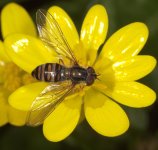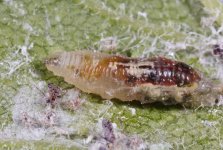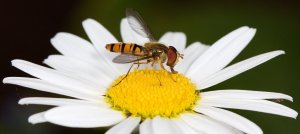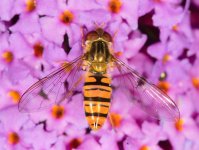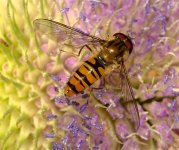Episyrphus balteatus (De Geer, 1776)
Identification
Identification difficulty = 1. ![]()
![]() according to Ball & Morris, 20241
according to Ball & Morris, 20241
Synonymy
Syrphus balteatus De Geer in Coe(1953)2. Known as the 'Marmalade Fly' possibly because its orange abdomen with narrow black stripes resembles thick-cut marmalade.
Biology
The larva preys on a wide range of aphid species on trees, shrubs and herbs, including cereal crops, but seems to prefer aphid colonies low down. Adults are regular flower visitors and bask on sun-lit foliage. They are very frequent in urban areas, sometimes in considerable numbers.
Flight period
The following plots show the number of unique records per week excluding those reported to be of immature stages.
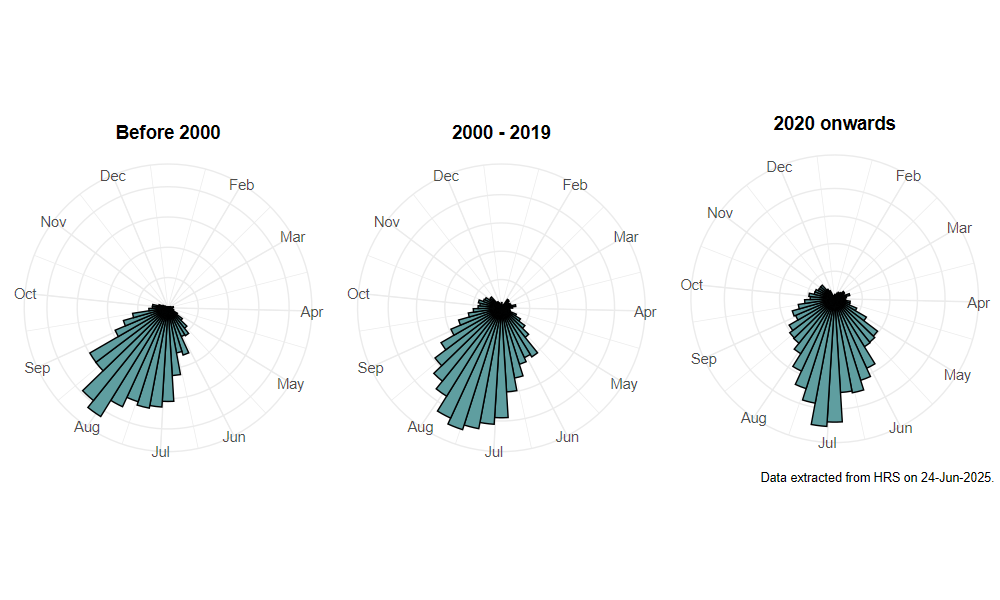
Distribution
This species migrates north from southern Europe in the spring, breeding along the way. Migrants typically arrive in Britain in late June and July when aphid numbers are building up, and larvae can reach high densities in cereal crops, resulting in vast numbers of emerging adults in late summer. Some adults overwinter here and winter records are not unusual. The recording scheme has received more records of this species than any other, although numbers vary hugely from year to year.

Trends
The following plots show the Frescalo TFactor vs year and a map of the rescaled frequency (all records) for the species.
